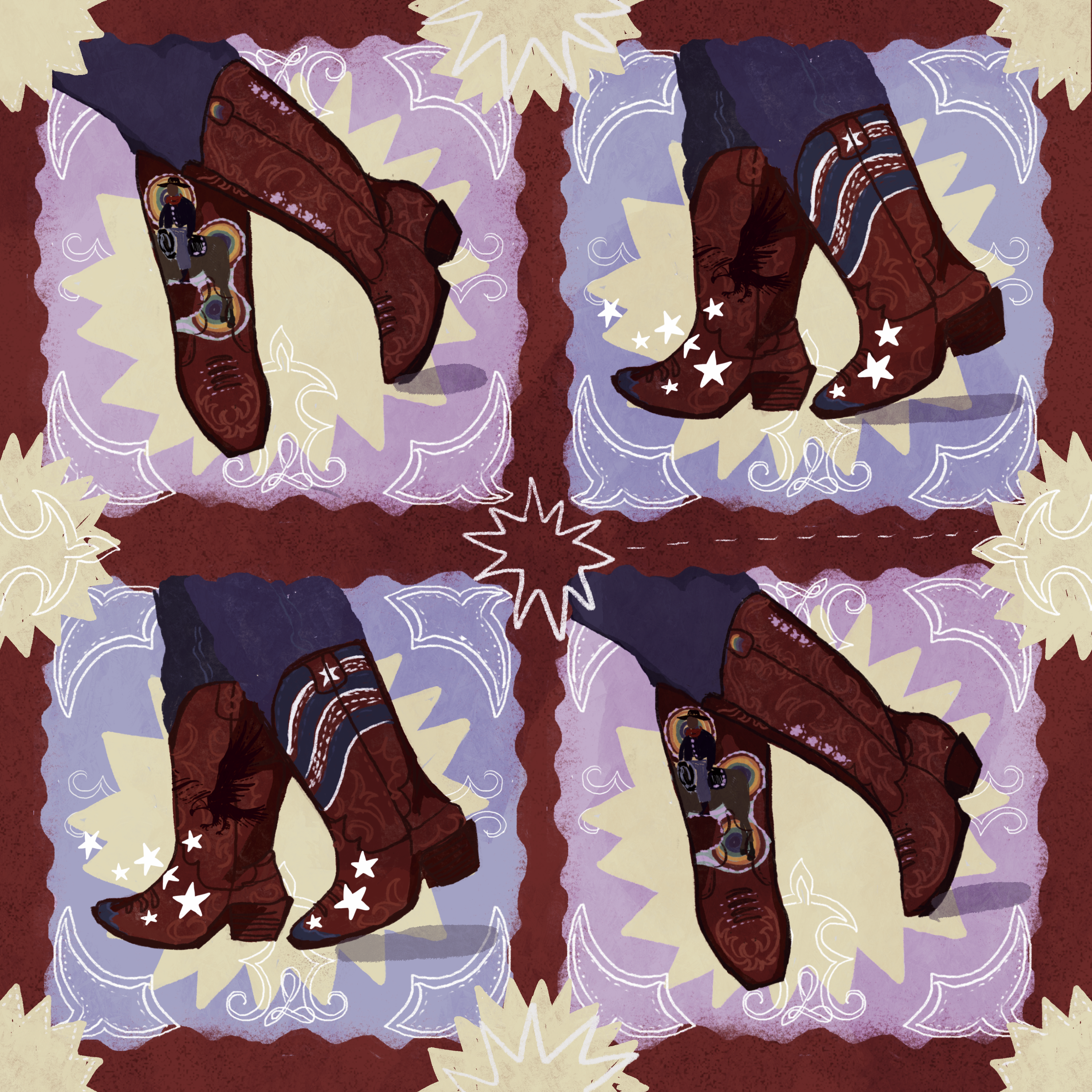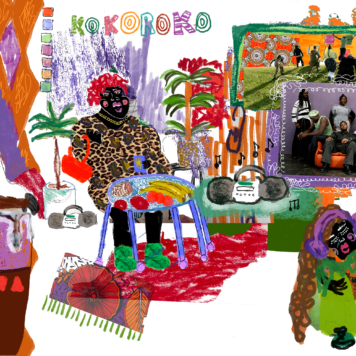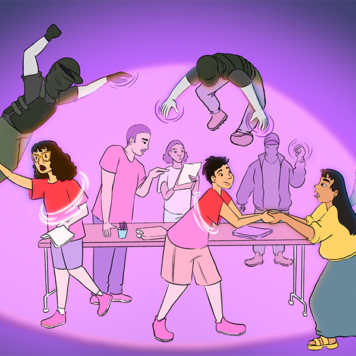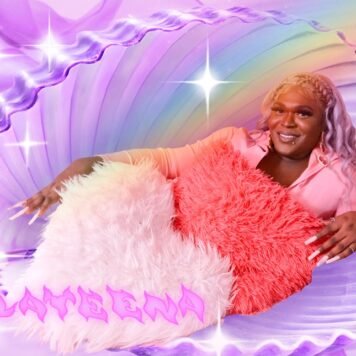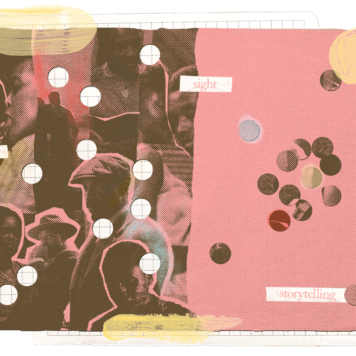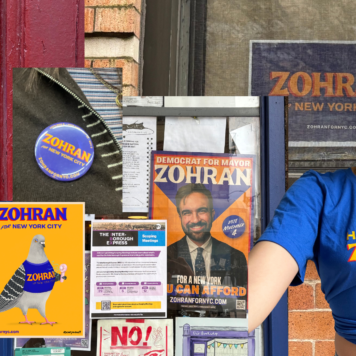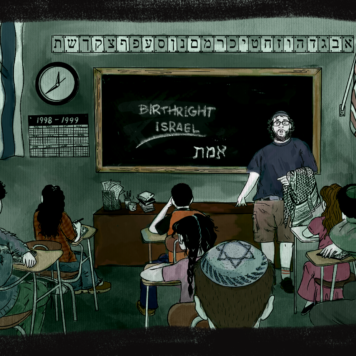2024 might be the year of the cowboy.
Everything, from our style, to our media consumption, is keepin’ it country. Twisters, Yellowstone, Dallas Cowboy Cheerleaders. Kacey Musgraves, Marren Morris, Morgan Wallen, Luke Combs. Bouquet by Gwen Stefani and The Right Person Will Stay by Lana Del Rey. Men and women aren’t just stomping down Nashville streets in cowboy boots – it’s happening in Manhattan as well. Even Bella Hadid is dating a rodeo roper and wrangler.
“Country is cool again,” country artist Lainey Wilson proclaimed in her recent single of the same title. “Everybody wanna be a cowboy.”
But not everybody is excited about it. Since November, people have started seeing the recent popularity of very American – if not America First – Western iconography as an early indicator of Donald Trump’s 2024 election victory and America’s lurch to the far right. Kyndall Cunningham argues in a Vox article that the renewed popularity of country is a symptom of the pendulum swinging, with a return of conservative values around masculinity, morality, and whiteness.
Conservative commentator Andrew Breitbart (yes, of the quack conspiracy site) once argued that “politics is downstream from culture.” Just as our politics and society stifle political diversity and grow more conformist, our culture does the same by coalescing around country. It’s a passing of the baton from the progressive-dominated years of Obama, pussy hats, Black Panther, and Hamilton. We’re back to a conservative-coded social currency.
A spoonful of country helps the conservatism go down
In the public consciousness, this straight line between cultural output and political outcome makes some sense: country music has a long history of selling whiteness and conservatism. The mythological figure of the cowboy himself is a relic of the American narrative of Manifest Destiny, of progress and expansion against “savage” forces. He is a rugged, masculine, and individualist hero that casts a strongman’s lawless and fascistic shadow – one that clearly has appeal in today’s culture of fear and distrust.
From commemorative albums released to mark Richard Nixon’s electoral victory to the military’s adoption of the genre post 9-11, country music has trended whenever America is most fearful of disturbances to the status quo. And stakeholders in the genre have participated in this arrangement without hesitation – the Country Music Association’s (CMA) long history of silencing left-wing activism in their space involves hushing up “controversial” topics such as substance abuse and AIDS onstage and repeatedly snubbing or microaggressing Black artists.
Radio stations and venues also have a role in controlling the genre’s image: in 2003, they participated in the blacklisting of “anti-American” artists like the Chicks, after they criticised the Bush administration’s invasion of Iraq, and they have been accused of shutting out female, Black, and queer country artists from the airwaves. In 2022, female artists received only 11% of airplay on country radio, and Black and queer artists only about 1%.
Unless you’re a national treasure like Dolly Parton, everything about the landscape disincentivises an engagement with left-to-liberal politics. Even now, modern country-pop singers are often silent on political matters, eking out a perfectly prepped “can’t we all just get along?” statement when pressed.
“It’s hard to imagine the narrow halls of country music bending to artists — and politics — that break tradition,” writes Kofi Mfrana in USA Today.
Yet, arguably, country music as a touchstone of red-blooded American identity has been bending in tandem with how political power has been bending for years. Its resurgence didn’t happen in a vacuum, in many ways, it has been fed from upstream by a growing politic and culture of inclusivity — a culture that is more historic to the genre that we’ve been led to believe.
Singing to the margins
If the myth of the cowboy dominates American culture, the myth that dominates American history is its core hypocrisy: “All men are created equal.”
Every struggle in America’s history where sweeping societal change or backlash has reshaped American government and society comes as a result of a tug-of-war with those words. The simple declaration hides a not-so-simple definition, ever-changing, of who exactly is “created equal.” Whether landowners, white men, free(d) men, the working class, women, Indigenous peoples, people of colour, immigrants, people with disabilities . . . the population of those “created equal” has expanded, not without pushback.
Country itself wouldn’t exist without these communities whose clamouring for rights expanded a modern vision of America. Country music was always decidedly “lowbrow,” in the 19th century, it openly discussed drinking and sexuality, and catered to an audience who found freedom and pride in being outside of the mainstream. Even today, the statement “I’ll listen to anything but country” is an actual sociological indicator that people use to signal an upper-class taste.
From the beginning, country was music for a lot of people excluded from middle class American standards of morality and decency — the working class, the white poor, African Americans, Mexican Americans, and queer people — and drew heavily from their creative talents and innovations. Even the “lone macho cowboy” was probably more Mexican, Black, Indigenous, and/or Brokeback Mountain than people would care to learn or admit.
Country artists are often staunchly pro-labour, singing to a blue collar working audience in ways that persist now, from Merle Travis’ “Sixteen Tons” to Dolly Parton’s “9-5.” Songs spoke to a sense of working-class solidarity and community, and an activist position that countered exploitation, marginalisation, capitalist bosses, and oligarchical power.
They sang to the margins, showing an open sense of pride for communities that are often overlooked. Johnny Cash supported Native American rights and performed concerts in prisons advocating his opposition to incarceration. Willie Nelson advocated for the environment and decriminalising marijuana, and Kathy Mattea stood up for HIV/AIDS against the wishes of the CMAs.
Admittedly, a lot of country’s history isn’t perfect. American labour pride of country’s early days (and today) has been plagued by nativism and racism, suspicion of power and the mainstream can lead to conspiracy and anti-intellectualism, and nostalgic glorification of the Good Ol’ USA has been weaponised to indulge regression – even bolstering an anti-historical narrative and movement around the Confederacy. And after 9/11, a decisive rightward shift in country music and backlash against dissenting artists seemed to put the brakes on country’s progressive past.
Revising country music and reshaping the American narrative
Now, American society is at a crossroads, with political space expanding and contracting under polarising forces and a deep sense of anguish over American identity and meaning. It’s no surprise that country is back – and also at a crossroads. While we have the Kid Rocks and Jason Aldeans of the world, we also have a newly visible class of musicians who are carving out space in today’s landscape and bringing country back to its roots.
Black artists like Beyoncé, Lil Nas X and Shaboozey have smashed records and elevated country in mainstream consciousness. Queer artists as varied as Orville Peck, k.d. lang, and Trixie Mattel have found a home in the genre – and the queer embrace of country has no small part in pushing country’s popularity in fashion, nightlife, and the airwaves.
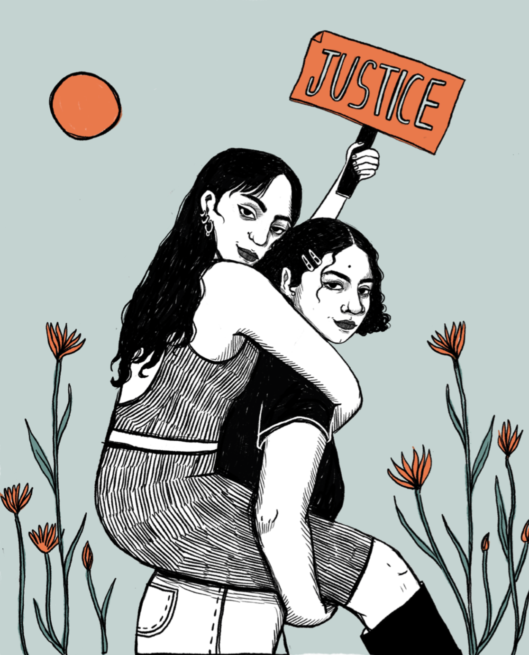
Join our mailing list
Sign up for shado's picks of the week! Dropping in your inbox every Friday, we share news from inside shado + out, plus job listings, event recommendations and actions ✊
Sign up for shado's picks of the week! Dropping in your inbox every Friday, we share news from inside shado + out, plus job listings, event recommendations and actions ✊
Our biggest star this year was a proud lesbian Midwest Princess, for whom an image of the American West comes from a lived reality that cannot be flattened. There’s a reason why the genre comes so easily to these groups: they are reminding us of the vast history of the genre that speaks to marginalisation, not just “Old Glory” and sundown towns.
If, per Gershwin, jazz is the “voice of the American soul,” country tells the American narrative, and by extension, American identity. The fight over how we understand country in 2024 is nothing less than figuring out how we want to understand our context and ourselves. As politics influences culture, culture also influences politics. Revising our notion of country beyond nativism and conservatism in this moment of the genre’s cultural dominance could make space in American society for a way through this divisive moment.
Perhaps the greatest proof-of-concept for this revision happened just a few years ago. In 2018, Tracy Chapman became the first Black songwriter to win Song of the Year at the Country Music Awards for “Fast Car,” a song she wrote 30 years before, because white country artist Luke Combs covered the song. This moment was less of a celebration than a reckoning – why was this the instance in which Black, queer women are finally recognised by an institution in this space?
But while the context was a reminder of how far behind country’s institutions are, the duet performance of the song at the 2023 awards ceremony was a reminder of how unifying good music can be. The act itself felt politically symbolic of what we could have: country as a space for Black, female, and queer excellence, for allyship and support, and for a celebration of diversity that betters the genre – and, by extension, America as a place and American as an identity that can accommodate the same.
What can you do?
- There is a lot of history and political theory around identity-formation, culture, and myth that is all tangled up in how country and American identity interact. Some of the book chapters and papers relevant and referenced in this article (and that readers would hopefully find interesting) include:
- “The Industry Is Playing the People Cheap”: Race and the Country Music Business from Nixon to 9/11,” a dissertation by Amanda Marie Martinez from UCLA.
- “‘Lord Have Mercy on the Working Man: Country Music, Respect(ability), and Social Class,” a chapter by Travis D. Stimeling from West Virginia University in the overall interesting Bloomsbury Handbook of Music and Social Class
- “Rednecks, Queers, and Country Music” by Nadine Hubbs
- “Country Quares: (Dis)identification Discourse in Black Country Aesthetic” a dissertation by Tamar J Ballard at Virginia Polytechnic Institute
- ““Nobody’s More Country”: Identity in Country-Rap Crossover Music” an honors thesis by Amanda Mai T Becker at Bates
- Read more pieces by Ning:
